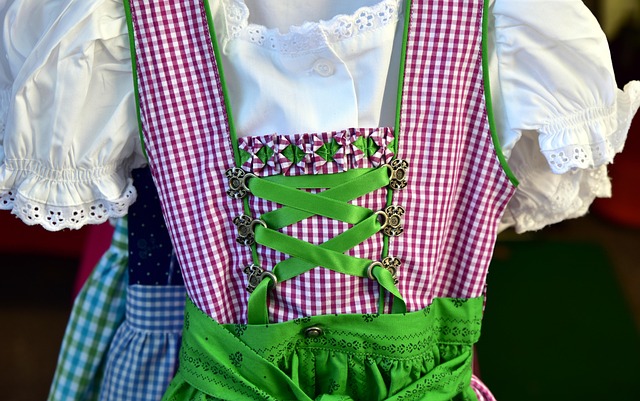Worldwide Dresses: Tradition Meets Modern Fashion
In the ever-evolving world of fashion, dresses stand as a testament to the rich tapestry of human culture and creativity. From the ornate traditional garments of ancient civilizations to the sleek, minimalist designs of contemporary runways, dresses have long been a canvas for self-expression and cultural identity. This article explores the fascinating intersection of traditional dressmaking techniques and modern global fashion trends, showcasing how cultural heritage continues to influence and inspire the dresses we wear today.

How Does Cultural Heritage Influence Modern Dressmaking?
Cultural heritage plays a pivotal role in shaping the landscape of modern dressmaking. Traditional techniques, patterns, and motifs from various cultures around the world continue to inspire designers and artisans alike. For instance, the intricate embroidery of Indian saris has found its way into contemporary evening gowns, while the bold geometric patterns of African textiles are reimagined in modern shift dresses.
The influence of cultural heritage in dressmaking goes beyond mere aesthetics. It also encompasses the preservation of traditional craftsmanship and the stories woven into each garment. Many designers are now collaborating with local artisans to incorporate age-old techniques into their collections, ensuring that these skills are not lost to time.
What Are the Current Global Fashion Trends in Dresses?
Modern global fashion trends in dresses reflect a diverse and interconnected world. One prominent trend is the fusion of Eastern and Western styles, resulting in unique hybrid designs that appeal to a global audience. For example, the Chinese qipao has been reimagined with modern cuts and fabrics, while Middle Eastern-inspired kaftans have become popular resort wear worldwide.
Another significant trend is the rise of gender-neutral and adaptive clothing. Designers are creating dresses that challenge traditional gender norms and cater to diverse body types and abilities. This shift towards inclusivity is reshaping the dress industry and expanding the definition of what a dress can be.
Technological advancements are also driving innovation in dress design. Smart fabrics that can change color or regulate temperature, 3D-printed dresses, and garments with integrated tech features are pushing the boundaries of what’s possible in fashion.
How Is Sustainability Shaping the Future of Dress Fashion?
Sustainability has become a crucial consideration in the fashion industry, and dresses are no exception. Designers and consumers alike are increasingly prioritizing eco-friendly materials and ethical production methods. Upcycled and recycled fabrics are being used to create stunning dresses that minimize environmental impact without compromising on style.
The concept of “slow fashion” is gaining traction, encouraging consumers to invest in high-quality, timeless dresses that will last for years rather than disposable “fast fashion” items. This shift is leading to a resurgence of interest in traditional dressmaking techniques that prioritize durability and craftsmanship.
Ethical fashion practices are also becoming more prevalent, with brands focusing on fair labor practices and transparency in their supply chains. Consumers are increasingly seeking dresses that not only look good but also align with their values.
How Can You Find the Right Dress for Your Lifestyle?
Finding the right dress for your lifestyle involves considering various factors such as occasion, comfort, personal style, and practicality. For professional settings, versatile dresses that can transition from day to evening are popular choices. These might include classic sheath dresses or wrap dresses in neutral colors.
For casual wear, the focus is often on comfort and functionality. Shirt dresses, maxi dresses, and jersey knit dresses offer ease of movement and versatility for everyday activities.
Special occasions call for dresses that make a statement while reflecting personal style. This could range from elegant cocktail dresses to formal gowns, often incorporating elements of cultural heritage or cutting-edge design.
When selecting a dress, consider the fabric’s suitability for your climate and activities. Natural fibers like cotton and linen are ideal for warm weather, while wool and synthetic blends offer warmth in colder climates.
How Do Worldwide Dresses Compare in Style and Function?
Dresses from different parts of the world vary greatly in style and function, reflecting the diverse climates, cultures, and lifestyles of their origins. Here’s a comparison of some notable worldwide dress styles:
| Dress Style | Origin | Key Features | Primary Function |
|---|---|---|---|
| Sari | India | 5-9 meter unstitched cloth | Formal and everyday wear |
| Hanbok | Korea | Wide skirt, cropped jacket | Traditional ceremonies |
| Dirndl | Austria/Germany | Bodice, blouse, full skirt, apron | Folk costume, festivals |
| Kaftan | Middle East | Loose, long-sleeved robe | Comfort in hot climates |
| Qipao | China | High collar, fitted silhouette | Formal wear, cultural events |
| Dashiki | West Africa | Loose-fitting, colorful tunic | Casual and ceremonial wear |
This comparison highlights the diversity of dress styles across cultures, each serving specific functions within their respective societies. While traditional forms often remain important for cultural events and ceremonies, many of these styles have also been adapted and modernized for contemporary fashion markets worldwide.
In conclusion, the world of dresses is a vibrant tapestry that weaves together threads of tradition and innovation. As global fashion continues to evolve, the interplay between cultural heritage and modern trends creates exciting possibilities for self-expression and creativity. Whether embracing sustainable practices, incorporating cutting-edge technology, or reimagining traditional designs, the future of dresses promises to be as diverse and dynamic as the cultures that inspire them.




